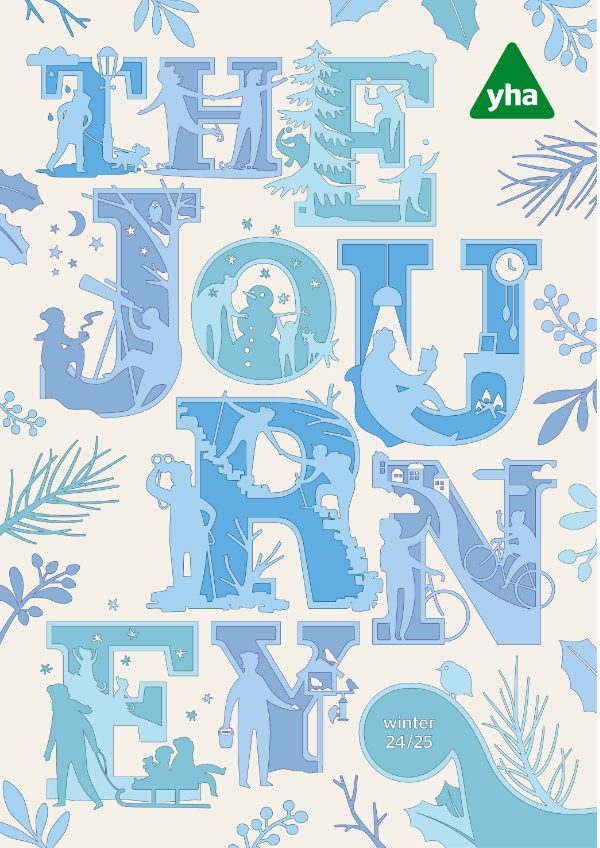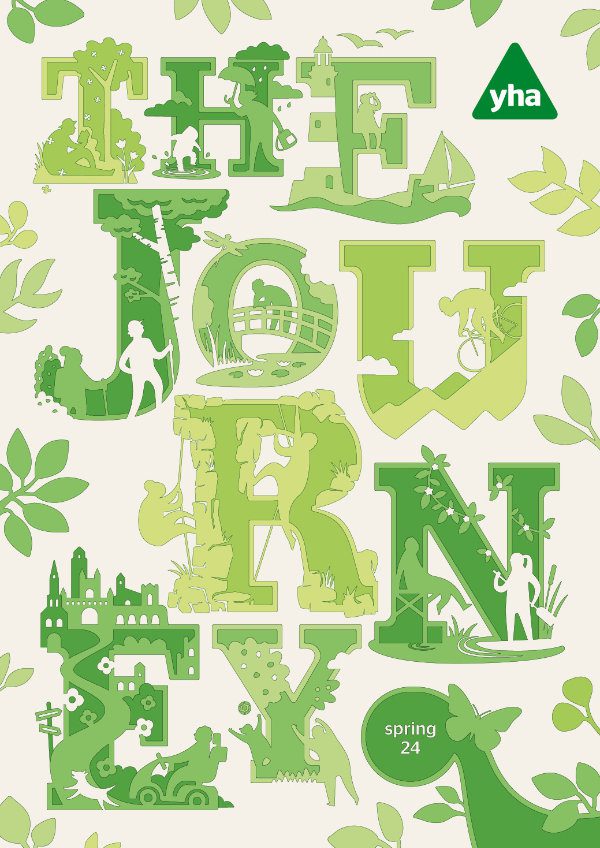Clear evenings are perfect for stargazing. Dr Sheila Kanani of the Royal Astronomical Society guides us through Britain’s night sky and teaches us how to stargaze.
Astronomy can be hugely rewarding, whether you have a substantial telescope and accessories such as a CCD camera or you’re a beginner observing with the naked eye. It’s one of the few sciences where amateurs make genuine contributions to research, although many people simply do it for the excitement of seeing the planets, star clusters and nebulae with their own eyes.
For anyone new to astronomy, the first step is to become familiar with the night sky and how it changes by hour and by season. A planisphere (or ‘star wheel’), monthly sky guide or computer software will help with this. There are also plenty of great smartphone apps like Sky View or Star Chart.
Constellation-hopping about the night sky is a fun and simple thing to do. There’s no need for anything except your eyes and a clear sky, although YHA The Sill at Hadrian’s Wall, YHA South Downs, YHA Whitby and YHA Hartington Hall all now have stargazing kits for hire. Here’s how to stargaze.
The Plough
If you’re a beginner to the night sky, the Plough is often a good place to start. It’s easily recognisable as it looks like a saucepan with a handle. The Plough makes up the main seven stars in the constellation Ursa Major, which is next to Ursa Minor in the sky as you look at them, and they’re supposed to resemble great and little bears.
They’re important to us because if you draw a line upwards through the two stars at the blade end of the Plough (furthest to the right in the illustration), the line points directly to Polaris, the North Star. This star can be used to find north if you’re ever lost on a clear night in the northern hemisphere and need to find your way home.
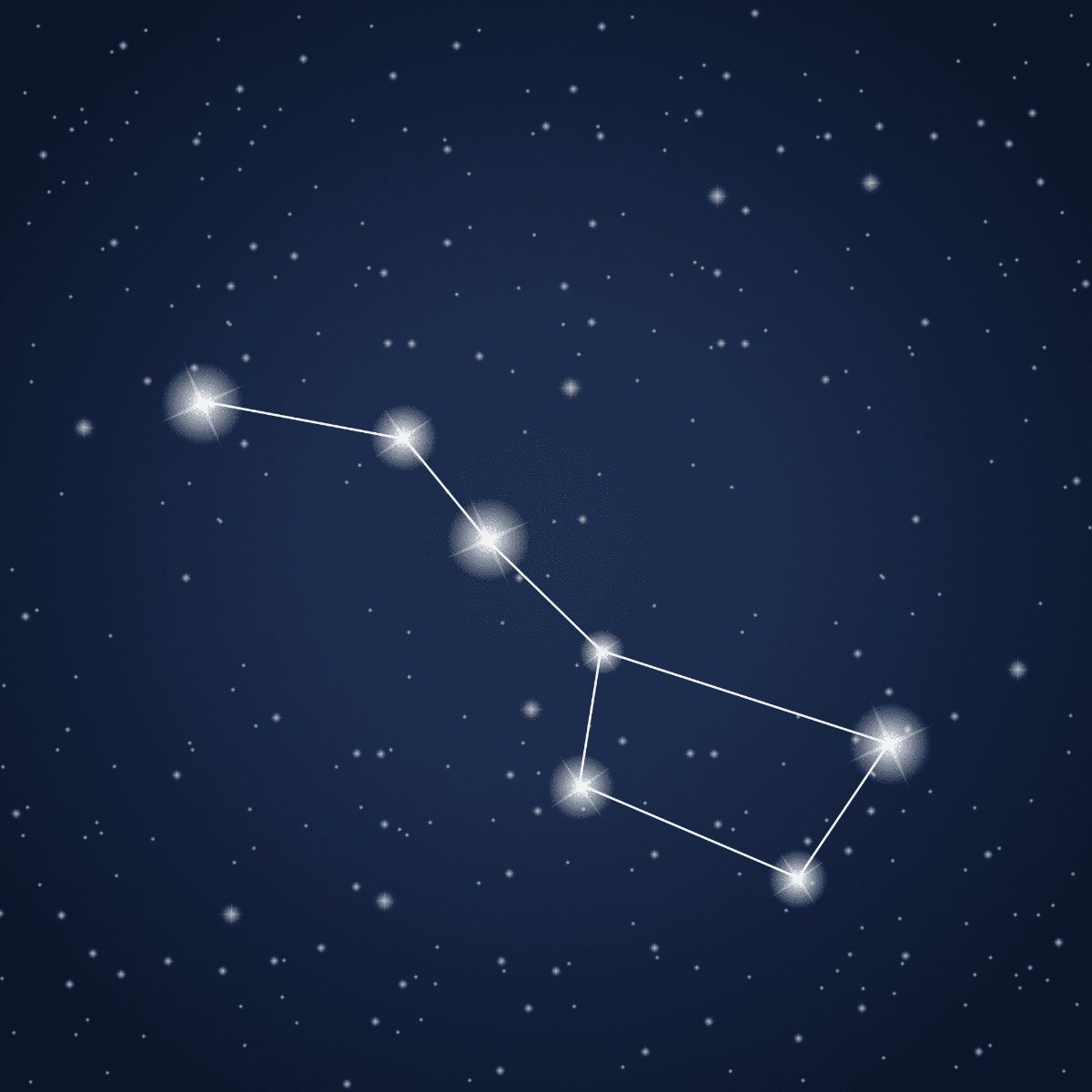
Cassiopeia
If you continue your imaginary line from the Plough, through Polaris, you’ll find a distinctive W shape in the sky. This is the constellation Cassiopeia.
Each night Cassiopeia circles the celestial pole, sometimes upright, sometimes upside down. If you look at Cassiopeia as a W, the right-most line of the letter points up to the constellation Cephus. The constellation Cephus looks like a stick drawing of a house, with four sides making a square then a triangular roof. The tip of the roof always points northwards. Cassiopeia is visible all year round from the UK.
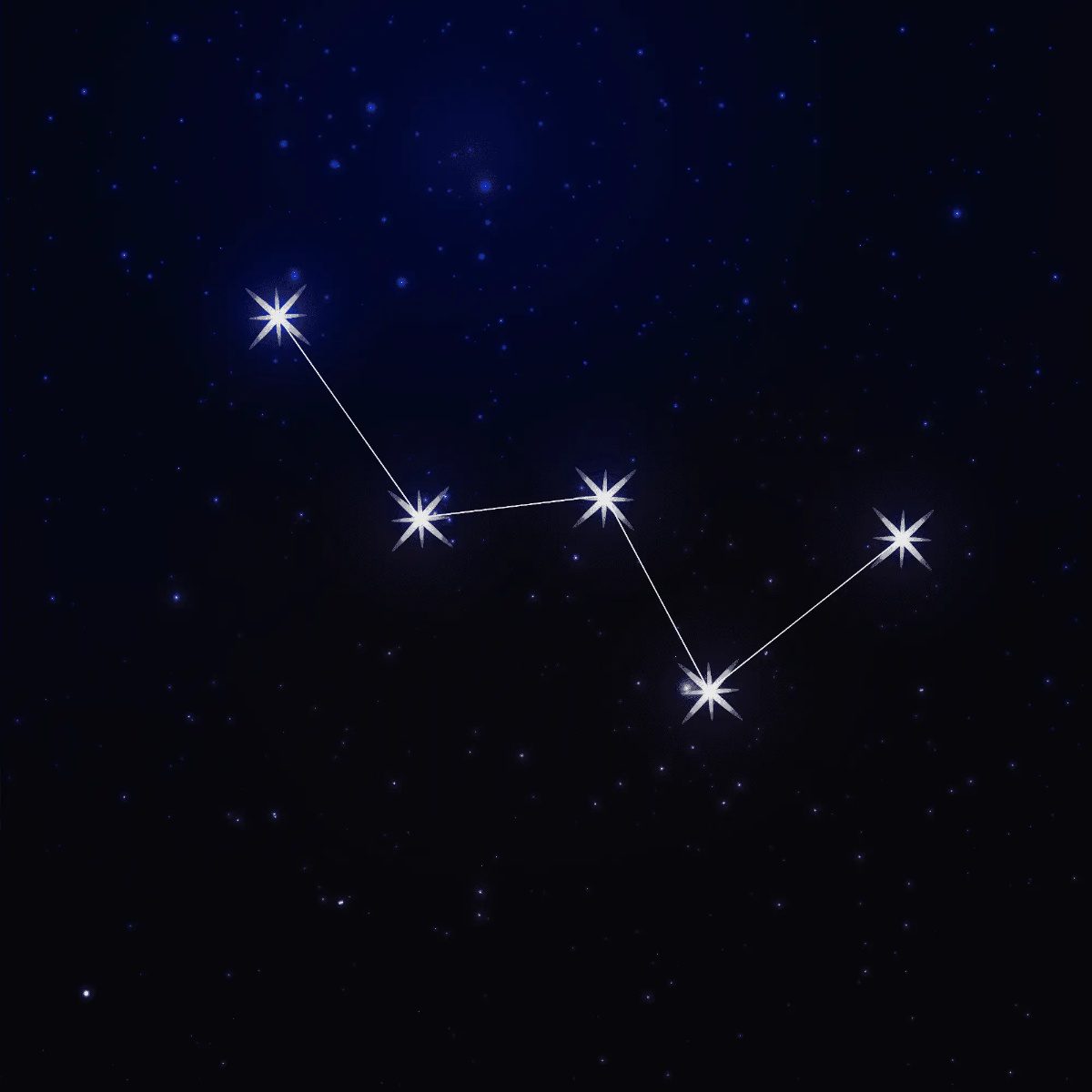
Orion
One of the most recognisable constellations is Orion, the great hunter. Best seen January to March, the easiest way to find Orion is to look in the southwest sky. You’re looking for three bright stars close together in an almost straight line. These three stars represent Orion’s belt. The two bright stars to the north are his shoulders and the two to the south are his feet.
Hanging off Orion’s belt are three fainter stars, known as the ‘Sword of Orion’. The middle star in the sword is slightly fuzzy – that’s because it is not actually a star at all. In fact, it’s a nebula, a misty patch of gas where new stars are forming.

Taurus
If you follow a line from Orion’s right shoulder through the top of his bow this will take you to Aldebaran, a red giant star in the constellation of Taurus, which is visible in winter and spring.
Keep following this line and you’ll find the Pleiades, a beautiful star cluster, also in Taurus.
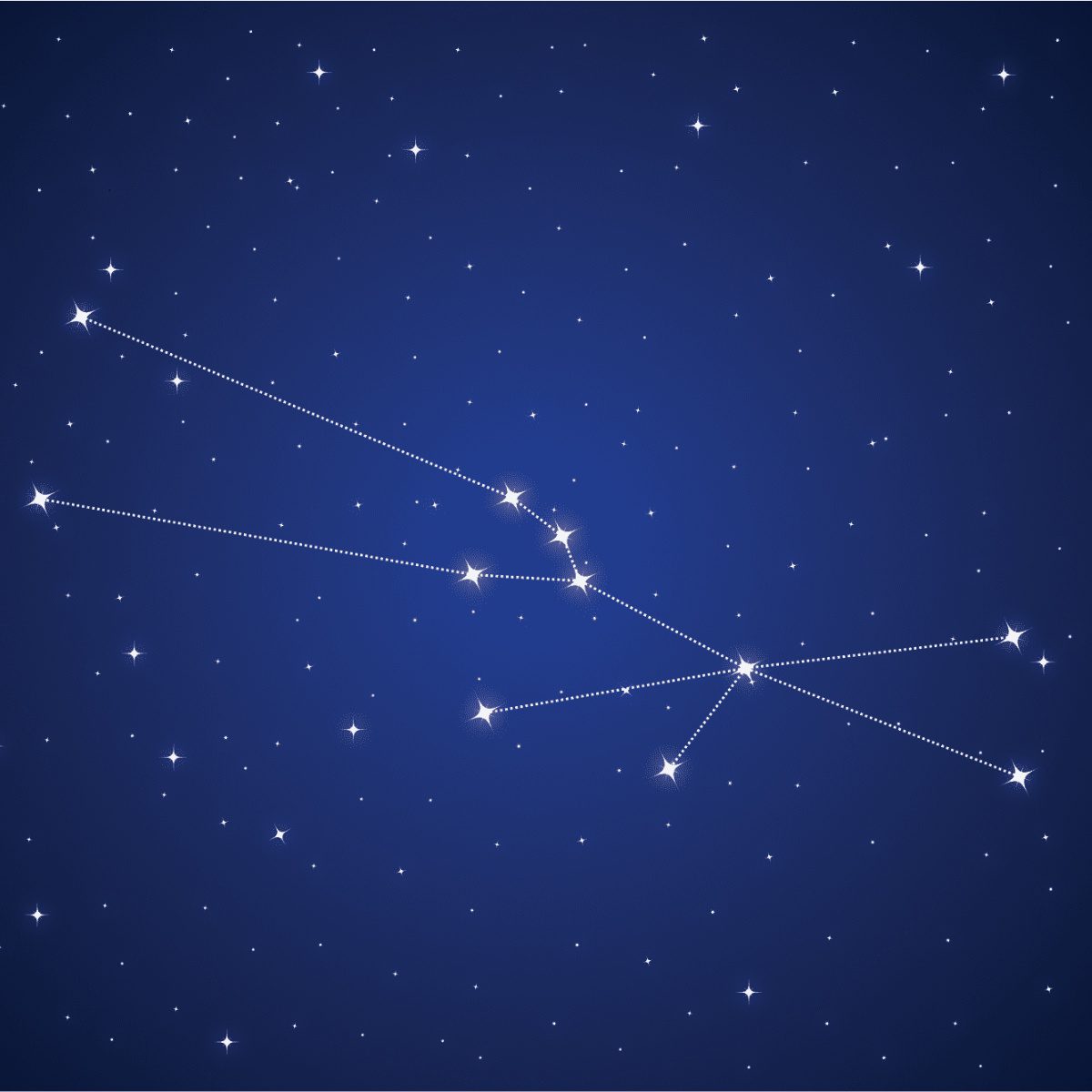
Download our stargazing guide
Ready to get started? You can download and print our stargazing guide.
